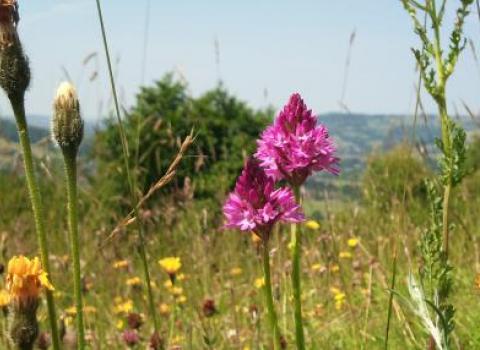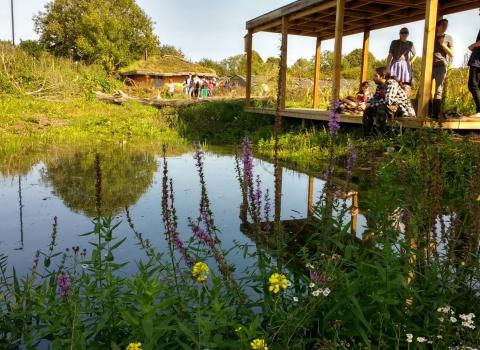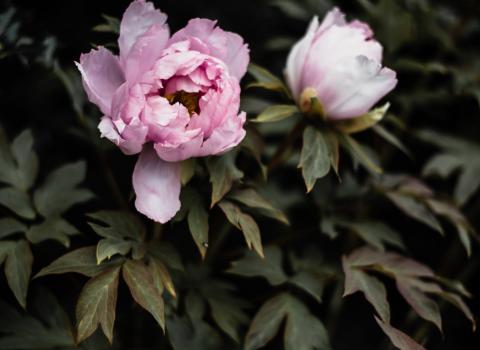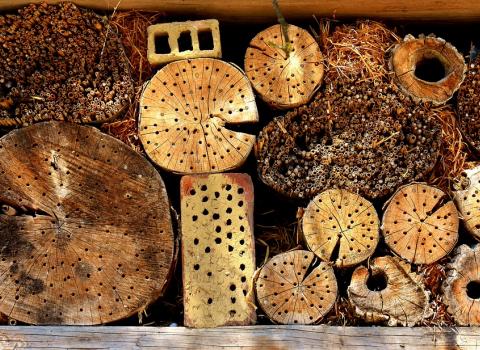Create habitat for wildlife
Our top tips, guides and videos to help you do something amazing for wildlife in your garden and local green spaces.
Things you can do...
for birds and bats
- Provide nuts and seeds in a bird feeder
- Plant a tree or hedgerow as shelter and corridors for wildlife
- Put up bird and bat boxes
for pollinators like bees, butterflies and moths
- Plant wildflowers and bee-friendly plants and seeds
- Leave an area of long grass as a wildlife area
- Create an insect hotel or bumble bee box
for all wildlife
- Create a shallow wildlife pond
- Provide a small dish of freshwater daily
- Relax and let nature do its thing
- Create a shelter! A pile of logs, leaves or even a compost bin will provide shelter
How you can do it
Our guides and videos show you how to make your garden a haven for wildlife.

Wildflowers
Turn your lawn wild! Native and exotic plants help important pollinators like bees, butterflies and moths to survive and thrive all year round. Plant wildflowers in a patch of your garden using a mix of low flowering species - great for wildlife, low maintenance and a perfect location for your summer BBQ. These plants are tolerant of mowing - for a short and tidy lawn, mow every three weeks to a height of two inches.
Top species to include: wild thyme, ladys bedstraw, lawn chamomile, red clover, black knapweed, common spotted orchid, birds-foot-trefoil, bulbous buttercup.

(c) Matt Cracknell
Ponds
Provide a source of water! A small area of permanent water quickly becomes a place for invertebrates and amphibians to breed, and for a host of other species to drink, bathe and catch prey. A pond will attract frogs, toads, newts, birds and dragonflies.
But you don’t have to build a lined pond - anything could serve as a permanent water feature: an upturned tyre, bucket, sealed plant pot, an old sink or bath. You don’t even have to put plants in - in time, nature will do the work for you!

(c) Annie Spratt
Shrubs
Woody shrubs and climbers offer a wide variety of feeding options for wildlife with fruits, berries, seeds and nectar-rich flowers.
They’re low maintenance and an excellent way of boosting the biodiversity in your garden, providing shelter and nesting sites for birds and insects away from view and bad weather.
Top species to plant: box, mahonia, juniper, hebe, lavender, hypericum, honeysuckle, guelder rose.
Trees
Plant a tree in your garden. They’re beautiful, they attract birds, and they provide food, shelter, and nesting materials for lots of species.
Trees add the most beauty and wildlife habitat for the least effort. Many gardens aren't big enough for large species like oak or lime, but lots of trees are suited for small gardens, like magnolia, malus laura, eucalyptus and acer campestre. Some can even grow in pots!

Shelters
Make a nest box, bee hotel or hedgehog house! Providing different shelters from various materials like wood, tiles and old pots can accommodate the widest biodiversity and create some lovely features in the garden. A shelters could be an upturned broken plant pot, hedgerow, log pile, climbing shrubs, rockery or compost heap.
